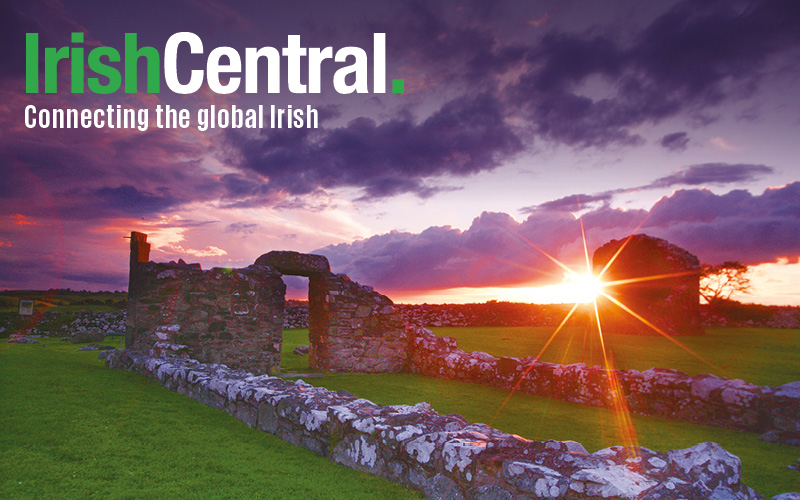Take a look at what Ireland looked like over a century ago with these exclusive photos.
An Claidheamh Soluis (meaning The Sword of Light) was an Irish nationalist weekly bilingual newspaper published throughout the early 20th century.
Read More: WATCH: 1916 Easter Rising footage featured in British Pathé online archives
Established and published by Irish language organization Conradh na Gaeilge (then known by its Anglicized name The Gaelic League) in 1899, the newspaper boasted some impressive editors including Eoin Mac Néill (1899-1901), the co-founder of Conradh na Gaeilge, and founder of the Irish Volunteers; and Pádraig Pearse (1903 - 1909), political activist and leader of the 1916 Easter Rising.
Although the primary goal of the newspaper at the time was to promote the Irish language, promoting the philosophies and policies of Conradh na Gaeilge, the paper’s pages now act as a doorway not just into the state of the Irish language in the early 20th century but into life as it was in the lead up to the Easter Rising.
Read More: Irish political cartoons from Home Rule period acquired by Great Hunger Institute
Conradh na Gaeilge are currently in the process of digitizing the images within archived copies of the paper and featured below are a selection of the photos published in 1913, the year of the Dublin Lockout, and the year in which both the Irish Citizen Army and the Irish Volunteers were formed. There are also more images available to explore in our gallery here.
1913 was also the year that the 3rd Home Rule Bill was rejected by the House of Lords in Westminster. English Conservative Party politician Andrew Bonar Law was one of those who strongly resisted the introduction of Home Rule and swore to fight against it. In late November 1913, he attended a huge Unionist rally in Dublin in the Theater Royal.
He is pictured below (left) with Edward Carson (right) being handed letters by Bean Uí Conaire (Ms. Conroy) a loyal member of the women’s movement.

Image: Conradh na Gaeilge.
This cartoon from the paper gives some idea as to how Home Rule was viewed at the time.
Other funny cartoons include this illustration of women asking to see everything the shop has.
Could you guess what towns are depicted in this illustration?
Read More: Thousands of historical IRA documents discovered in Co Clare house
Historic moments in Irish history were also recorded. Pictured below is the first plane to travel over the sea to Ireland.
Crowds await James Larkin outside Liberty Hall:
Almost hidden among the advertisements, we come across famous names. This ad is for the shop owned by Tom Clarke, the man renowned as being the person most responsible for the Easter Rising. It is now known that this tobacconist was watched by the British during these years as they tracked the actions of the most high-profile figures in the move for Irish independence.
Another 1916 leader and former editor of the paper is mentioned in this image of the school St. Enda’s. The school was established by Pádraig Pearse in 1908 to promote bilingual education and the promotion of Irish heritage in the education system.
Read More: Rare footage of Pádraig Pearse at O’Donovan Rossa funeral on anniversary of his death
We also see glimpses of normal life as it was in the country in 1913. These images show divers preparing to go underwater, school children in Galway, the glens in Donegal and a market in Derry:
Bringing home the turf was a much slower affair:
It would also take a much longer time for you to receive your post. Pictured here is the 1913 Christmas card delivery on its way to Achill:
That’s if your post ever reached its destination at all. This letter is notification of a complaint to the Irish postal service about the delivery of post with Irish addresses and the delay or even loss of this post. Unfortunately, complaints regarding the Irish language to the postal service have still not been rectified some 100 years later:
The newspaper, of course, included tales of the GAA heroics of the time and featured pictures of the teams. Below is an image of the Kilkenny hurling team in 1913 followed by a shot of the Kilskeery camogie team from Co. Tyrone. We can’t imagine that gear was easy to play in!
As the newspaper of Conradh na Gaeilge, it recognized the work of the organization all over the world:
Finally, as a player in the Irish Literary Revival, it worked for the promotion of all Irish works in both English and Irish. Below are ads for Riders to the Sea in the Abbey Theatre and a scene from the first Gaelic play, “St. Patrick at Tara”.
Images with thanks to Conradh na Gaeilge.
*Originally published in 2015
This August, we're celebrating Gaeilge (the Irish language) and Irish music with a series highlighting those around the world speaking and learning Irish, and playing Irish music. Visit our dedicated music section here or our Irish language section here to read more.
You can follow throughout the month by using the hashtags #ICMusic, #ICGaeilge or by following us on Facebook, Twitter, Instagram or LinkedIn.
Do you have an idea for a story on Irish music or the Irish language? Why not join IrishCentral's contributor's platform Irish Voices? You can learn more about it here and sign up here.
What's your favorite image? Let us know in the comments!




Comments